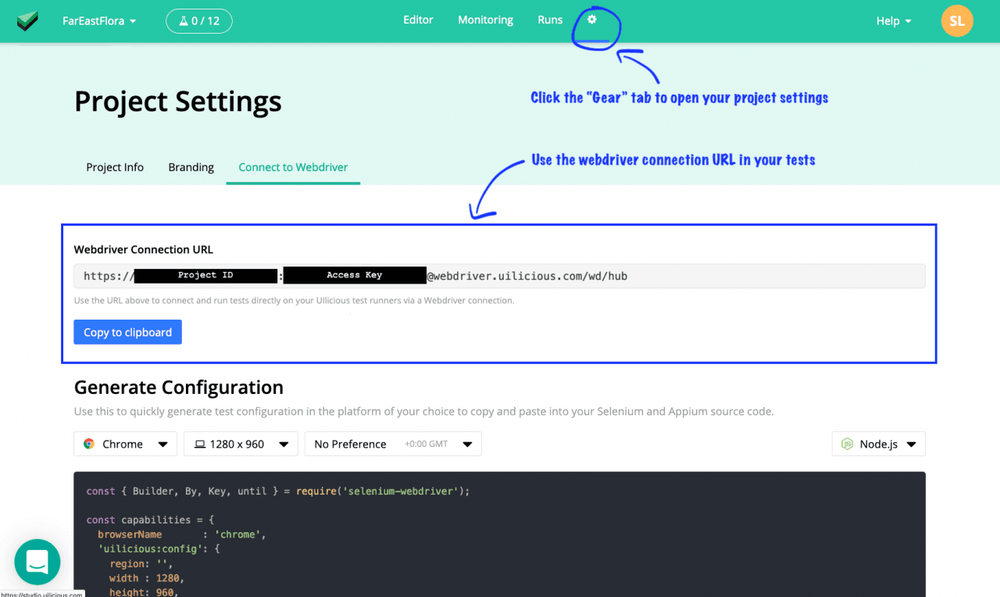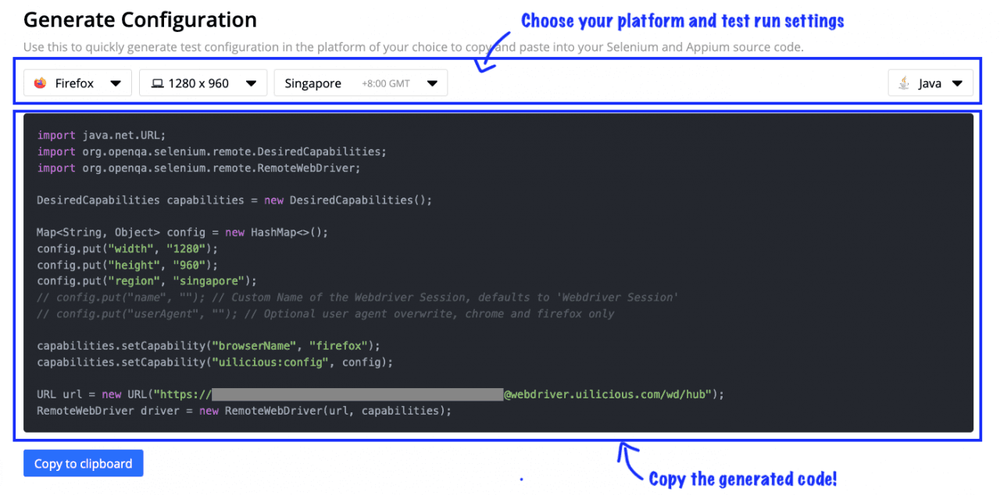What's new: 🔌 Run Selenium WebDriver tests on UI-licious
If you have existing Selenium WebDriver tests, or tests written with browser automation libraries that use the WebDriver Protocol, you can now run them remotely on UI-licious Testing Grid. This feature is available to all Business plans.
How to connect to UI-licious Testing Grid
Step 1: Copy your Webdriver Connection URL
Log into UI-licious Web IDE, go to Project Settings (click on the Gear icon), and under the Connect to Webdriver tab, copy your unique Webdriver Connection URL.

Step 2: Connect
Configure your Selenium WebDriver test to connect to the UIlicious Testing Grid with the URL that you’ve copied.
Here's an example for Selenium Java.
ChromeOptions chromeOptions = new ChromeOptions();
WebDriver driver = new RemoteWebDriver(new URL("<UILICIOUS WEBDRIVER URL>"), chromeOptions);
driver.get("http://www.google.com");
driver.quit();If you are using another library that requires the connection parameters to be configured separately instead of a single URL string, you can refer to the information below:
- Protocol:
https - Hostname:
webdriver.uilicious.com - Port:
80 - Path:
/wd/hub - User: Your Project ID
- Key: Your Access Key
The user and key for authentication is the Project ID and your Access Key, which is already in the Webdriver Connection URL that you’ve copied, which follows the format:
https://<PROJECTID>:<ACCESSKEY>@webdriver.uilicious.com/wd/hub
Step 3: Configure
The easiest way to configure the browser capabilities is to use the Webdriver Configuration Generator. Select the desired platform, browser, resolution, and region, and copy the code to setup your test.

There are more options available for configuring the test browser, to learn more, read the Connect to UI-licious Grid full documentation.
And that’s it! Now you can remotely execute your Selenium Webdriver test on the UI-licious Testing Grid.